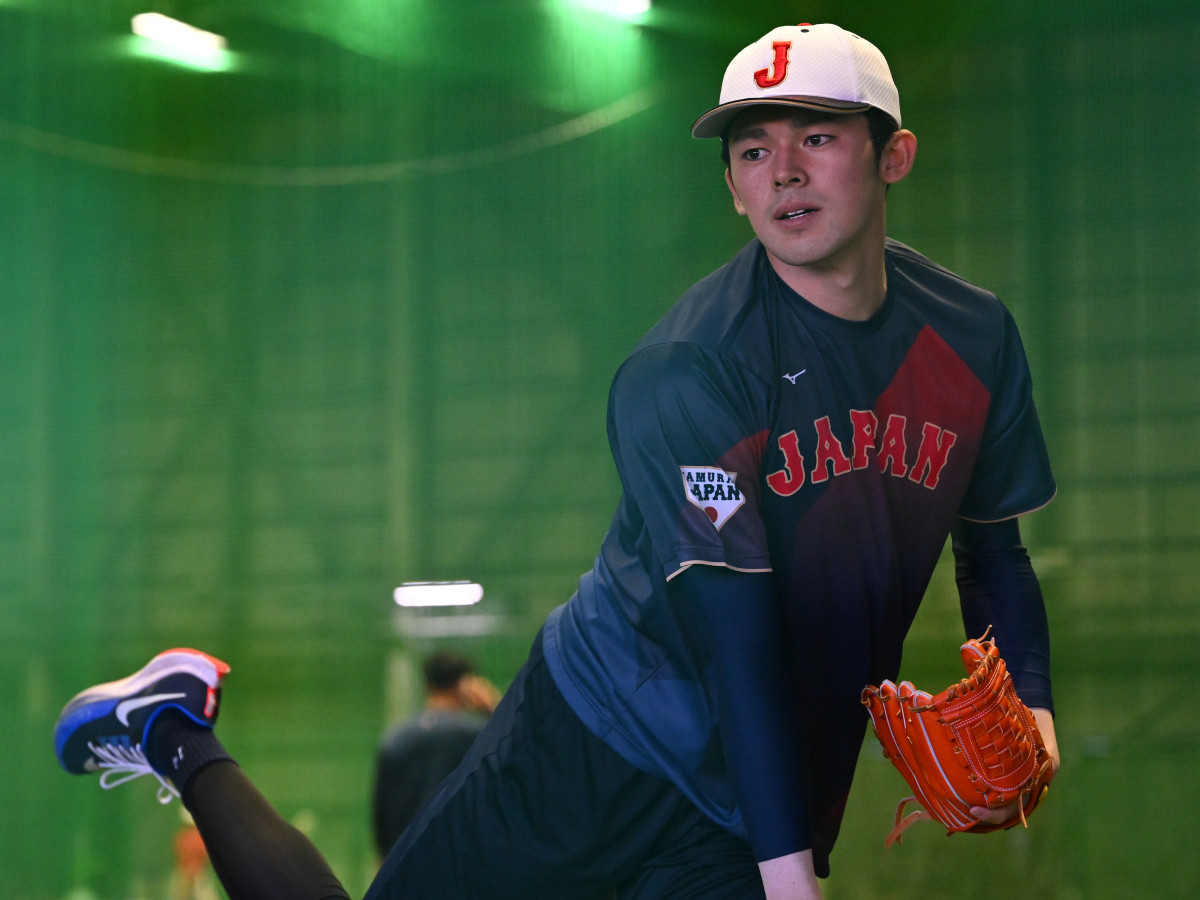Six Reasons to Watch the World Baseball Classic

Welcome back to the World Baseball Classic. The tournament will kick off Tuesday when Cuba plays the Netherlands at 11 p.m. ET, and Wednesday, a full slate of opening-round games will follow. It’s been a long time since the last WBC—six years!—and if you’ve forgotten in the interim, the event is one of the most delightful on the baseball calendar, not quite like anything else in the sport. There are plenty of reasons to tune in. Here are just a few.
1. The joy of different baseball experiences
The WBC is built around the idea that baseball is global. That’s certainly (and increasingly) true. But if baseball works as a universal language, it does so only through distinct, varied dialects.
Every national brand of baseball is different. You can see that by sampling different leagues in any given year: The personalities, celebrations and styles of play will differ from the KBO in Korea to Serie Nacional in Cuba to the CPBL in Taiwan. But the WBC brings them all (and more) together. Each national team brings some of the flavor of its home country. And there’s more to be found in the stadium locales, too: The four cities for pool play are Taichung, Tokyo, Phoenix and Miami, and each should have its own distinct vibe.
2. One-of-a-kind teammate pairings
Imagine if Julio Rodríguez and Juan Soto shared a team with Manny Machado … and Rafael Devers and Wander Franco and Jeremy Peña. In MLB? That’s all but impossible. For the WBC? It’s just the lineup of Team Dominican Republic. (And this is without Vladimir Guerrero Jr., who had to withdraw due to a knee injury but otherwise would have made the top of this lineup even more fearsome.)
Or check out the Japanese rotation: Shohei Ohtani, Yu Darvish, NPB reigning MVP Yoshinobu Yamamoto and 21-year-old phenom Rōki Sasaki. (If Sasaki’s name sounds familiar, it’s probably from his 17 consecutive perfect innings last year.) And Team USA will join Mike Trout with Mookie Betts, Nolan Arenado, Pete Alonso and Paul Goldschmidt. The talent combinations you get here are simply unmatched.
Another fun wrinkle? National teams also mean lots of brothers who’d otherwise never play together. Team Netherlands has the brothers Profar (Jurickson and Juremi) and Schoop (Jonathon and Sharlon) while Puerto Rico has Edwin Díaz pitching alongside his brother Alexis.

3. Games that matter just the right amount
This time of year is full of games that don’t matter. Oh, sure, spring training games matter for determining roster spots and positional needs and new pitches. They matter as exercises in baseball development. But they don’t matter as games. The same goes for the star-studded exhibition game we get later in the summer: The All-Star Game is plenty enjoyable, but it’s played as an entertainment showcase, not as a game to be won.
The WBC occupies a rare space. It’s both incredibly fun and also something that players are motivated to actually win. There’s a unique competitive spirit that comes with playing on a national squad. Every player on these teams is excited to be here: They specifically chose to play in the WBC. (If you’re concerned about players getting hurt by going max effort this early in spring—don’t worry, there are mandatory pitch count limits for starters.) For some of them, it will be their only chance to represent their country, and even for those who have played in other international competitions like the Olympics, this is special for its combined star power and spotlight. (The Tokyo Olympics certainly did not have the likes of Ohtani and Soto and Trout.)
It’s hard to find something that combines the joy and lightheartedness of an exhibition with the competition of a playoff contest. But the WBC does just that.
4. Old friends
The last time Yoenis Céspedes graced an MLB roster was 2020. Jair Jurrjens? ’14. Maybe you thought 41-year-old Oliver Pérez would be off your radar for good after having played for eight MLB teams in 20 years. Not so! They’re all right here. (Céspedes is with Cuba; Jurrjens, the Netherlands; Pérez, Mexico.) We’ve already gone over the star power on some of these teams. But with this many players needed to fill out this many rosters? It’s a “Remember Some Guys” expo, and a very fun one, at that.
5. Ideal underdog stories
Sure, MLB has its share of underdogs. (The A’s will play the Astros 13 times this season.) But the baseball season is long and full of randomness, and it’s rare to see real stakes for any given individual game, and the financial and structural dynamics that create good teams and bad teams in a professional context sometimes make it less fun to root for the little guy. (Insofar as a roster born of a billionaire owner starving his payroll is ever a “little guy.”) You’re getting hardly any true underdogs. For that? You need something like March Madness. And the closest you’ll get to that in baseball is the WBC.
The tournament has expanded this year to 20 teams. That means we get to watch first-time qualifiers like the Czech Republic, with a roster that includes a firefighter and teacher, led by a manager whose day job is being a neurologist. We’ll get to see teams like Nicaragua and Israel do their best to challenge a heavyweight like the Dominican Republic. Is a real Cinderella story likely? Not particularly. But the thrill of possibility makes the ride worth it.
6. Honkbal
There are all sorts of linguistic delights to be found through watching baseball in other languages. (For instance, Italian for “home run” is “fuoricampo,” which more literally translates to “offscreen.”) But you really need just one example to make the point here: The Dutch word for “baseball” is “honkbal.” What a joy. Honkbal!
